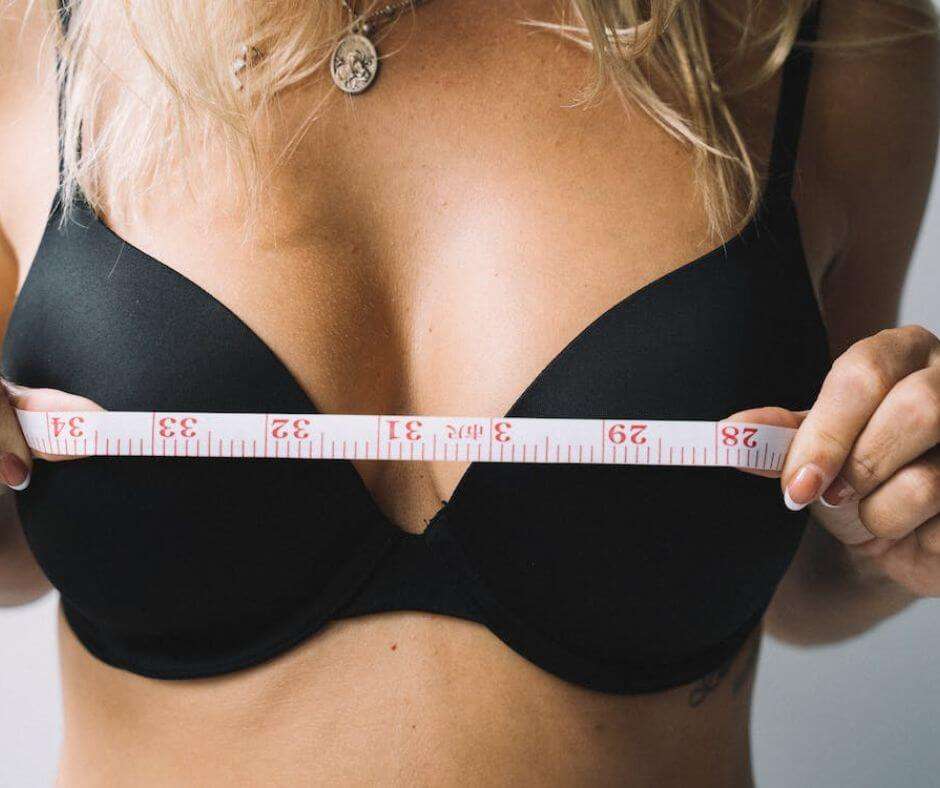As an Amazon Associate, I earn from qualifying purchases.

Pregnancy is a beautiful and challenging journey for women, and it comes with many changes in the body. Breast enlargement is one of the most significant changes, which makes it necessary for expectant mothers to invest in maternity bras.
Maternity bras are designed to offer much-needed support and comfort during pregnancy and nursing. However, choosing the best maternity bra can be overwhelming for first-time mothers, given the wide range of options available.
How to Buy a Bra When Pregnant
Maternity & Regular Bras – Is There a Difference?
Before shopping for maternity bras, you must understand the features that make them different from regular bras. Maternity bras are designed to accommodate breast size and shape changes during pregnancy and nursing. They have wider straps and bands to provide more support and prevent digging into the skin. They also have soft cups designed to mold around the breast and nipples, reducing pressure and friction.
When to Buy a Maternity Bra?

The ideal time to buy maternity bras is during the 2nd trimester, when the breasts start to grow and regular bras no longer fit correctly. This, however, may vary based on the individual’s body, and some women may need to buy maternity bras earlier or later. It is advisable to get fitted for a maternity bra by a professional to ensure you get the right size and support.
How to Size Up Bra During Pregnancy?
Choosing the right size for your maternity bra is crucial for comfort and support. As mentioned earlier, it is advisable to get fitted for a maternity bra by a professional. However, if you cannot visit a professional, you can measure yourself at home using a measuring tape. Measure around the largest region of your bust to acquire the exact size, then around the ribcage, and just below the breasts. Deduct the band measurement from the bust measurement to determine the cup size.For instance, if your breast size is 38 inches, and your band measurement is 34 inches, your cup size is D.

Types of Maternity Bras

Maternity bras come in different types, each designed to suit different needs and preferences. Some of the common types include:
1. Sleep Bras: Sleep bras are designed for comfort and are perfect for nighttime wear. They are constructed of soft, breathable fabrics and have no underwire or padding, allowing for freedom of movement.
2. T-shirt Bras: T-shirts are seamless and designed to provide a smooth appearance under tight-fitting clothes. They have light padding and an underwire for support and shaping.
3. Sports Bras: Sports bras are intended for pregnant ladies who want to continue exercising. They offer maximum support and minimize bouncing and discomfort during physical activities.
4. Underwire Bras: Underwire bras provide maximum support and shaping, making them ideal for women with larger busts. However, wearing underwire bras in moderation is advisable, as they can restrict milk flow and cause discomfort.
Features to Look for in Maternity Bras
When choosing a maternity bra, there are specific qualities to look for to offer the maximum support and comfort. These include:
Adjustable Straps: Maternity bras with adjustable straps allow easy customization to suit your changing body. They also prevent digging into the skin, reducing discomfort.
Wide Bands: Maternity bras with wide bands offer more support and prevent digging into the skin, reducing discomfort.
Soft Cups: Maternity bras with soft cups mold around the breast and nipples, reducing pressure and friction and providing comfort.
Breathable Material: Maternity bras made of breathable materials such as cotton, bamboo, or microfiber are ideal as they allow for proper ventilation, reducing sweating and irritation.
Nursing Clips: Maternity bras with nursing clips allow for easy breastfeeding access. They also provide more support and prevent discomfort when nursing.
Common Mistakes to Avoid When Buying Maternity Bras
When buying maternity bras, women make common mistakes, leading to discomfort and inadequate support. These include:
Buying the Wrong Size: Buying the wrong size of maternity bras can lead to discomfort and inadequate support, which can be detrimental during pregnancy and nursing.
Choosing Style over Function: It is essential to prioritize comfort and support over style when selecting maternity bras. While it is good to look good, comfort and support should be the top priorities.
Not Investing in Quality: Investing in quality maternity bras may seem expensive, but it is worth it in the long run. Quality bras last longer, offer better support and comfort, and prevent discomfort and pain.
Conclusion
Choosing the best maternity bra is crucial for comfort, support, and well-being during pregnancy and nursing. Understanding the features that make maternity bras different from regular bras, knowing when to buy them, and choosing the right size and type are crucial steps toward finding the best maternity bra. It is also important to prioritize comfort and support over style and invest in quality maternity bras to prevent discomfort and pain.
FAQs
- How many maternity bras do I need?
Having at least three to four maternity bras is advisable to ensure you have enough for daily wear and washing.
- Can I wear regular bras during pregnancy?
Regular bras may be uncomfortable and inadequate for the changes in breast size and shape during pregnancy, making it necessary to invest in maternity bras.
- Can I wear underwire bras during pregnancy?
Underwire bras are not recommended for daily wear during pregnancy as they can restrict milk flow and cause discomfort. It is advisable to wear them in moderation.
- When should I replace my maternity bras?
It is advisable to replace maternity bras every six to nine months or when they no longer offer adequate support or become uncomfortable.
- How do I care for my maternity bras?
Maternity bras should be washed in cold water and hung to dry to prevent shrinkage and damage to the materials. Avoid using fabric softeners and bleach, as they can damage the bras.



